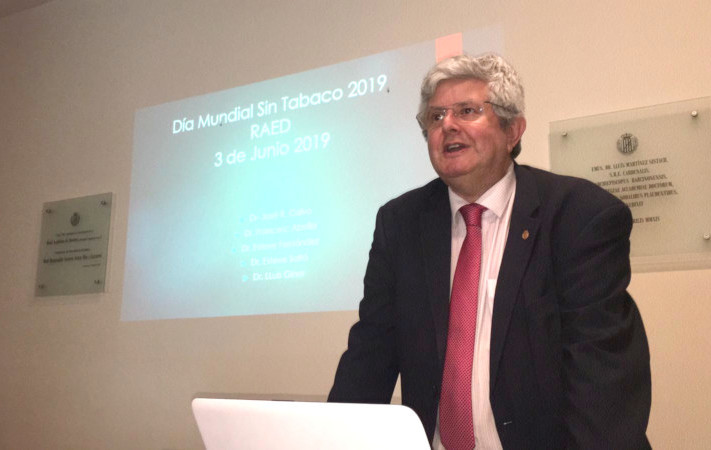The Royal Academy joins the fight against smoking one more year with an expert debate
The Royal European Academy of Doctors-Barcelona 1914 (RAED) has added another year to the fight against smoking promoted by the World Health Organization and on June 3 held in Barcelona a specific debate on the subject in which the experts Francesc Abella, director of the Addictions Unit of the Saint Mary Hospital in Lleida; Esteve Fernández, director of the Tobacco Control Unit of the Catalan Institute of Oncology; Esteve Saltó, responsible for health programs of the Ministry of Health of Catalan Government and the full academicians José Ramón Calvo, president of the Institute of International Cooperation of RAED, and Lluís Giner.
The debate began with a presentation of what smoking means today. Tobacco is the only legal product that is known to kill up to half of its consumers, which represents more than eight million people in Spain, of which more than seven million are consumers of the product and about 1.2 million they are non-smokers exposed to secondhand smoke. Tobacco is therefore one of the greatest threats to public health that the world has had to face.
Almost 80% of the more than one billion smokers in the world live in low or middle income countries, where the burden of morbidity and mortality associated with tobacco is higher. Effective monitoring can determine the extent and nature of the tobacco epidemic and the best way to adapt policies. Only one in three countries, which represent a third of the world’s population, monitors tobacco consumption, for which they systematically carry out, every five years, representative surveys among young people and adults throughout the country.
After this presentation, Calvo explained the problems that continue to arise with the increase in the consumption of tobacco, while Fernández made a detailed presentation on the strategies that the tobacco industry is doing to engage new consumers with the emergence of new forms of causing addiction through new products, both electronic cigarettes, which are nicotine vaporizers, and tobacco heaters.
 Abella, meanwhile, made a critical statement about what is being done and what could be done in this area and mainly on what is the position that should be taken from a clinical point of view to get better and more persistent rates of abandonment. Saltó referred to the role played by the various administrations and how the data handled do not invite optimism, but caution, since it seems that the measures that were imposed following the entry into force of the law on Protection against Tobacco in Spain in 2011 significantly improved some aspects, but it’s also observing a relaxation in its application, surveillance and control of spaces.
Abella, meanwhile, made a critical statement about what is being done and what could be done in this area and mainly on what is the position that should be taken from a clinical point of view to get better and more persistent rates of abandonment. Saltó referred to the role played by the various administrations and how the data handled do not invite optimism, but caution, since it seems that the measures that were imposed following the entry into force of the law on Protection against Tobacco in Spain in 2011 significantly improved some aspects, but it’s also observing a relaxation in its application, surveillance and control of spaces.
Giner made a brilliant and detailed exposition of how tobacco consumption affects oral health and showed the signs of periodontal diseases, typical of smokers and the consequences of oral cancer that occurs with an unusual frequency among smokers. Calvo closed the round of interventions showing graphically how tobacco companies are attracting young customers and how new product presentations try to clearly resemble attractive consumer products for young people both in packaging and in their external appearance.







